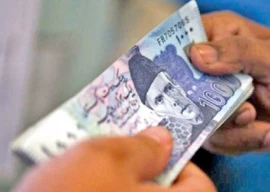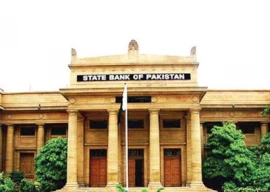
A flash of black robes, blonde hair under an orange headdress and curious blue eyes have welcomed visitors to the hidden valleys of Kalash for centuries. Pakistan has been described as a melting pot of cultures by many, but nowhere does this become as apparent as when one takes the dilapidated road into Bumburet Valley.
Living in a world unto themselves, there have been many speculations as to the origins of the Kalasha. One of the most widely accepted theories, however, links them directly to the Greek armies of Alexander the Great.
The mighty Macedonian swept everything between Pella and the Indian subcontinent in the 4th century BC at the head of a seemingly unstoppable army. Alexander founded various settlements on his warpath as well – most of which were named after him – but whether he left behind this animistic society of Kalash has been long debated. Interestingly, a February 2014 article by the New York Times on tracing ancestries claimed to have established the link. Quoting well-reputed geneticists, the Kalasha were said to have ‘chunks of DNA from an ancient European population’. It added that this came about as the result of a ‘mixing event’ at some point in time between 990 BC and 210 BC.
A Dardic population in a region of overwhelmingly Indo-Aryan stock, the cultural distinctiveness of the Kalasha is glaringly obvious to any visitor. As a result of this, they have also become an obvious target in the face of rising extremism in the wider region. While some have dispelled the seriousness of the matter, many continue to think that a grave threat is being posed to the Kalasha’s ancient way of life.
It was a decade ago that an organisation called Kalash Welfare established the only museum in the region with the assistance of the Greek government. Kalasha Dur – meaning ‘house of the people’ in Kalashamondr – is one of the few institutions aiming to preserve the culture, history, arts and crafts of one of the last remaining Shaman societies on earth.
The museum, built in Bumburet, falls under the supervision of the Khyber-Pakhtunkhwa (K-P) government’s Directorate of Archaeology and Museums. However, it is administered by a committee comprised of local residents, most of whom work on a volunteer basis.
The property covers about 4 kanals of land and has been constructed with an intricate balance of traditional design and modern methods. The concrete skeleton is layered with stone walls, parallel wooden beams and carved verandas that are characteristic of the region and have long been a feature of houses, temples and altars in the valley. Near the front entrance of the museum has also been built a temple dedicated to the deity Jestak, the protector of generations in local traditions.
Kalasha Dur houses a large number of ethnological collections of Kalasha culture and the wider Hindu Kush range. Hand-woven costumes, leather pouches, antique jewellery, wooden statues, an unsettling variety of weapons, baskets used to transport crops, weaving equipment, household utensils, musical instruments, carved columns and doors are found in abundance at the museum and in a surprisingly well-preserved state.
The second floor of the building houses a school of Kalasha culture with a library of books written on the valley, and also a hall for professional training of local crafts.
A member of the administrative committee, Saeed Saftali, told The Express Tribune that most of the artefacts have been purchased, while others have been donated by people from all three valleys: Bumburet, Birir and Rumbur.
“Some antiques have also been purchased from markets as far as Chitral and Peshawar,” said Saftali, adding that everyday dozens of people from around the globe would once visit Kalasha Dur. “However, the arrival of international tourists has almost stopped now.”
One of the first Kalasha archaeologists, who also worked as a gallery assistant at the museum, Sayed Gul Kalash informed that the K-P government is working to construct another museum in Bumburet.
“These steps are necessary for the preservation of our traditions and history,” said the archaeologist.
“The Kalasha culture has been around for thousands of years and will remain alive for thousands more to come.”
Published in The Express Tribune, June 29th, 2014.
COMMENTS (6)
Comments are moderated and generally will be posted if they are on-topic and not abusive.
For more information, please see our Comments FAQ


































1714129906-0/Clint-Eastwood-(1)1714129906-0-270x192.webp)





First of all... The army of Alexander were not" Greek". The word is fairly new, certainly not ancient and it represents a present day country of people, not an ethnicity. His army was Thrako-Iliro-Epiro-Emathi Pelasgian. (4 branches of one greater family) Secondly... the Kalashi tribe of Hunza Valley, as well as the Burusho and Pamiri tribes.. are the descendants of Alexander's men left behind. Their symbols are Illyrian/Macedonian and their tribe names are Albanian in name and meaning. They have the same dress, dance, instruments, physical features, way of life, and even the same shepherd dog as Albanians past and present.
Kalasha people are pagan peoples. There are Dur Duran durak Darin in chitral bajawar and in all pakhtunkhwa and their country name was Durgah now presently name are Dargah which are present in North waziristan ,kurm Agency , Tirah , Mohmand Agency But when chandar gupt mooria purchased it from Sulcus the king of bacteria given him 500 Element the name of the region change into Moorgah. Moorgah hill in tirah and kohi moor in Mohmand Agency are still present. The Dur of moorgah were called Ashoka Dur than changed into Shoka dar and officialy call it Shabaqdar the Border Town of district charsadda with mohmand Still mooran Village is present in Shabqadar also the tribes moorgahi khel moorcha khel are present in shabqadar and mohmand Agency. The inhabitant of kohi moor are called Omar khel change from moor to Omar after Islam. Mehsood are macedonian. federation.
@A reader That is also what I've read. I wouldn't put too much thought behind the the specifics, the Vedas are after all very old. The Kalash are considered to be 'neutral' Aryans neither Indo-Aryan or Iranian (Irano-Ayan).
P.S: Some people aren't aware so I'll point out that Europeans aren't Aryan. That was some poorly researched propaganda by the Nazis (along with the use of the Swastika).
@A reader: From where you are quoting this bizarre juggled up history.? When there was a Persian empire then at that time there was no such thing as Pushtun, How can you compare thousands of years old Persians with the recent Pushtun. There is no comparison whatsoever. Persian civilization was known for Science, Literature and Art. No Pushtun civilization have ever been found by any historian before the 15th century. Pushtun is a recent Phenomena and the first written Book in Pushto Grammar verb was infact written in 1805.. Before the 15th century no Pushto literature, grammar or any old book is never been found. Swat and Afghan regions were known for Gandhara Civilization only. No Evidence of Parallel civilizations have been found in this region. Regarding to the so called integration i just want to say that this is a total non sense. A small information for you that India is a continent not a name of some ethnicity. People are related to each other in the whole continent. The so called Aryan theory is totally baseless as well.
For god sake...these people are NOT Macedonians. They are Indo-European peoples who along with certain Pashtun and Tajik groups never integrated with either the Indian or Persian empires. When the war of the ten Kings occurred between the forefathers of the Indians and the Iranians and came to a close, those Aryan groups that migrated eastward formed Arya Vart (Northern India) and those that migrated West created Aryanam Vaijehi (Iran). The Kalash, like certain Pakhtoons and Tajiks, belong to groups did not migrate out. The closest relations to the Kalash are what are now called Nuristanis (and were called Kafirs prior to an Afghan invasion). The Nuristanis worshipped both Shiva and Yama (both Hindu gods). The Nuristanis along with the Kalash fought under sage Vishwamitra during the Battle of the Ten Kings according to the Vedas.